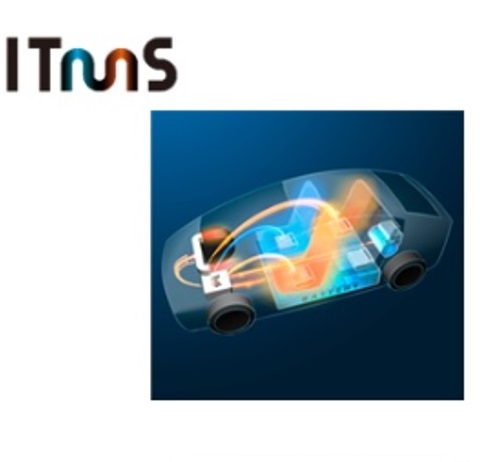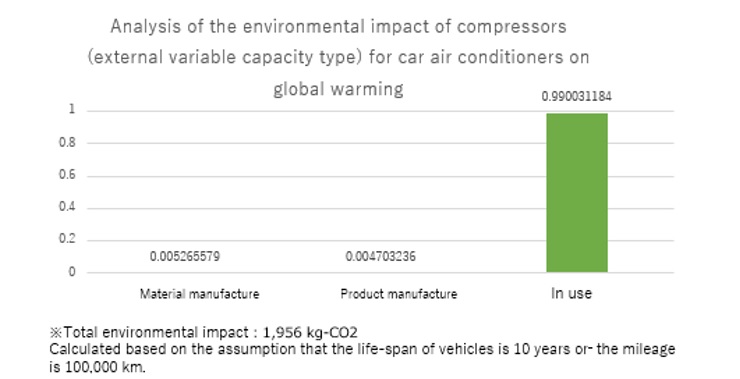Development of environmental products
Environmental Product Development Initiatives

Sanden is working on the development of new technologies with an eye toward society in 2030.
With environmental awareness increasing worldwide and environmental regulations being tightened in many
countries, the automotive industry has been increasingly accelerating the shift to automotive
electrification. A major challenge in developing electric vehicles (EVs), for which it is difficult to
recover and use engine waste heat, is an increase in battery drain speed of electric vehicles when air
conditioning is used, consequently leading to a decrease in the distance EVs can travel. We have been
advancing the development of new technology that contributes to increasing the traveling distance and
riding comfort of EVs by using the heat energy generated from them in an integrated and effective manner.
Introduction of Product Environmental Impact Indicators
Product environmental impact indicators, designed to increase the value of automotive parts, are a tool
used to measure compatibility between environmental performance and convenience.
(JAPIA (Japan Auto Parts Industries Association) Product Environmental Impact Indicator Guidelines;
http://www.japia.or.jp)
In FY2010, all newly developed models were certified as Sanden Eco Label products. With the aim of
expanding the creation of highly competitive eco products in terms of environmental performance and making
clear engineers’ environmental contribution, in FY2011 the Sanden Group introduced a product environmental
index (see below) that calculates the product of important environmental performance factors (including
weight, size and other basic performance features) by comparing all new products with applicable standard
models. Although the targets set in the Product Environmental Impact Indicators were almost achieved in
FY2022, we will continue to work on development so that all mass production machines can achieve the
targets set (on a product-by-product basis) in the indicators.

Using Life-Cycle Assessment (LCA) to Analyze Products' Environmental Impact
Sanden uses LCA analysis to measure the environmental impact of each of its principal products at each
life-cycle stage, from raw material procurement through manufacturing, transportation, use, recycling, and
disposal.
Having found that the main impact of our principal products is during the use stage, we
have concluded that we can make the greatest contribution to reducing environmental impact by improving
technologies for conserving energy during product use. Accordingly, we are analyzing and quantifying data
on energy consumption in the product-use stage and utilizing this feedback to develop “advanced
environmental products.”

